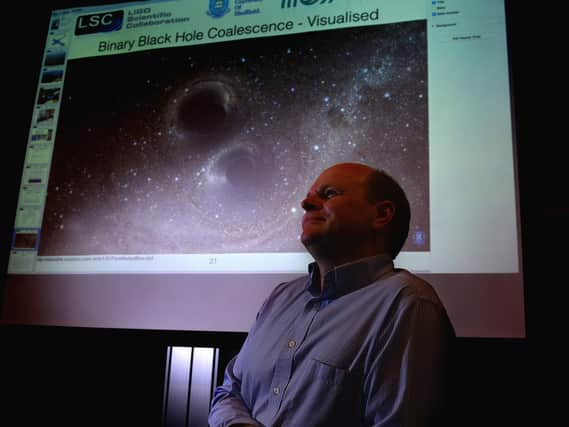University of Sheffield leads UK study that could open 'new frontier in physics'


The collaboration of scientists from across the UK are working to detect hidden particles, the discovery of which could open up “a new frontier in fundamental physics”, they say.
The project, Quantum Sensing for the Hidden Sector (QSHS), is led by scientists at the University of Sheffield and involves the Universities of Cambridge, Lancaster, Liverpool, Oxford, Royal Holloway and University College London and the National Physical Laboratory.
Advertisement
Hide AdAdvertisement
Hide AdThe group aims to shed new light on the particles of the “hidden sector”, which could provide new insights into “fundamental mysteries”, they say.
The most important is the problem of dark matter, the description given to particles that do not absorb, reflect, or emit light and cannot be seen directly, but which are known to exist because of the effect they have on objects that can be observed.
Galaxies and the universe are actually heavier than the constituent parts that can be seen – stars, planets, dust and gas. But the extra matter making up the difference could be made up wholly or partly of ultra-light particles – hidden sector particles – that have so far evaded detection.
If found by the UK researchers, these would hugely widen the field of physics, and may be a step in the direction of solving what happened after the big bang.
Advertisement
Hide AdAdvertisement
Hide AdEd Daw, professor of dark matter and gravitational wave physics at the University of Sheffield, and principal investigator for the project, said: “It’s high risk, high reward science. You might see nothing or you might on the other hand make a massive discovery.
“Nobody knows which, but the discovery of hidden sector particles would open up a completely new frontier in fundamental physics. It would be like the invention of the particle beam accelerator, a whole new way of doing science.”
Hidden sector particles may play other significant roles in physics, including the evolution of the universe in the moments after it came into existence, he said.
The multi-million-pound project is funded by the Science and Technology Facilities Council (STFC), as part of UK Research and Innovation (UKRI), and is said to be the best supported and largest UK effort in hidden sector physics to date.
Researchers are also working with the Axion Dark Matter Experiment in the US, which uses a strong magnetic field to convert dark matter axions to detectable microwave photons.